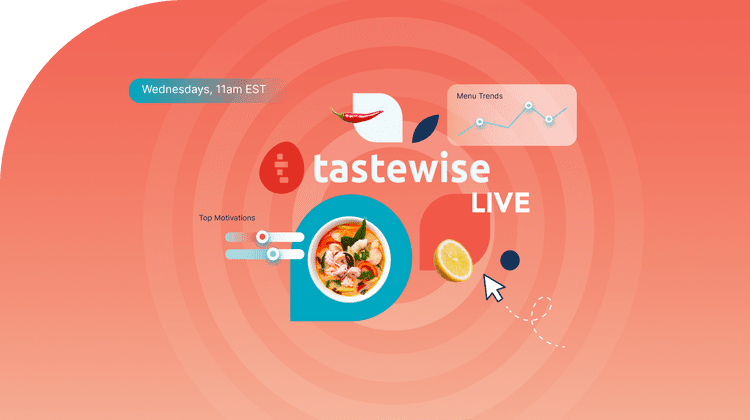TL;DR:
- Waitrose introduces a Japanese menu range with AI assistance.
- Tastewise’s AI platform analyzes social media and online recipes for food trends.
- AI adoption in the food industry has doubled since 2017.
- AI helps retailers predict consumer preferences, reducing product development risk.
- Social media has outpaced the food industry in trend prediction.
- Human oversight remains crucial in AI-driven food trend analysis.
- Waitrose tests Tastewise’s AI chatbot, aiming to accelerate product development.
- The goal is to offer products that align with evolving consumer tastes and preferences.
Main AI News:
Under the enchanting aura of fake pink cherry blossoms, guests indulged in House of Suntory cocktails and savored delectable dishes like chicken karaage, prawn gyoza, and cauliflower tempura, all elegantly presented on a kaitenzushi-style conveyor belt. This was the grand unveiling of Waitrose’s latest Japanese culinary offering in London.
Unbeknownst to many, including those living hundreds of miles away, the genesis of Waitrose’s 26-dish Japan Menyū range was significantly influenced by our collective food preferences. The secret ingredient in this culinary equation? Artificial intelligence, harnessed through the ingenuity of Tastewise, an AI platform that rigorously analyzes menus, social media trends, and online recipes to uncover the ever-evolving landscape of food trends.
While concerns loom over AI’s encroachment on various industries, the food sector has warmly embraced this technology, with its utilization doubling since 2017, as reported by McKinsey’s 2022 Global Survey on AI. The reason is simple: AI offers beleaguered retailers and food manufacturers a glimpse into the future desires of capricious consumers. The process of perfecting a new food concept typically spans a year, yet most endeavors miss the mark. Consequently, companies often find themselves scrambling to catch up with trends that have already exploded across social media platforms.
Martyn Lee, Waitrose’s executive chef, whose illustrious career includes crafting menus for a national restaurant chain, recalls the challenges of obtaining trend insights in the past. “Traditionally, researchers would spend days studying restaurant menus and combing social media to identify trends, often laboriously inputting data into spreadsheets tracking the rise of an ingredient or dish,” he reminisces. However, this cumbersome process has been revolutionized by companies like Tastewise and their London-based counterpart, BlackSwan.
Tastewise’s data proved instrumental in Waitrose’s strategic decision-making. Notably, discussions about Japanese cuisine on social platforms surged by 15%, while a nine-month analysis revealed a 5% increase in the number of restaurants incorporating it into their menus. Tastewise even identified specific flavor preferences, such as yuzu and ponzu, both of which found their way into the Menyū range (featuring delights like cauliflower tempura with a soy yuzu dip and “shredded cabbage and edamame slaw” paired with a ponzu dressing).
Lee demystifies the apprehensions surrounding AI: “AI can be quite a scary term…but it’s a way of us accessing billions of data points of information. The scale is so vast that it simply cannot be achieved through human trawling alone.” AI’s true prowess lies in pattern recognition. “Instagram is really interesting because people tend not to take photos of food they don’t like,” Lee points out. “Then, often, people will put hashtags about the texture. For example, they might say, #fried, crispy, or barbecued, so we get a picture of the cooking method. If somebody pins a recipe on Pinterest, that gives you a great sense of an intention to cook.”
These insights, when combined with Waitrose’s own customer and sales data, paint a clearer picture of a product’s potential success. This data-driven approach significantly mitigates the risk associated with launching new products in an ever-changing culinary landscape.
The rapid rise of social media usage has left the food industry, known for its bureaucratic product development processes, playing catch-up. According to Andy Upton, co-founder of Panku, a Japanese and Korean street food brand, consumers have outpaced retailers in predicting food trends. He cites the vegan and plant-based movement as a prime example, as retailers were initially slow to respond to its growing popularity. Upton used machine learning to predict trends before the launch of Panku in 2020, successfully identifying trends like bubble tea and CBD (cannabidiol) alongside the plant-based wave.
However, AI is not without its pitfalls, as demonstrated by New Zealand supermarket Pak’nSave’s unfortunate experience when an app designed to suggest meal ideas served up hazardous recipes. Lee emphasizes the importance of human intervention in such cases. “You have to treat it as a conversation because sometimes it will throw out a concept you know is not going to work. You have to go through the process of having a conversation with the platform to refine it further, constantly asking questions, which will get it closer and closer to what you want.”
Waitrose is also testing Tastewise’s new AI chatbot, TasteGPT. This innovation holds the promise of expediting product development, potentially reducing the current 12-month timeline. Lee envisions, “What this enables me to do is get recipes and photographs tailored to food trends that I can then test with customers before any of my team put ingredients to pan.”
Conclusion:
The integration of AI-driven trend analysis in Waitrose’s culinary innovation signifies a significant shift in the market. It empowers retailers to anticipate and respond to evolving consumer preferences with precision, reducing the inherent risks in product development. However, the human touch remains essential to refine AI-generated concepts, ensuring they align with market demands. This trend underscores the increasing importance of data-driven decision-making in the food industry, ultimately leading to more customer-centric product offerings.

